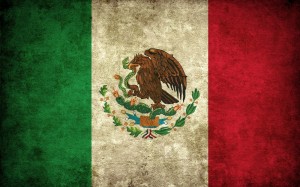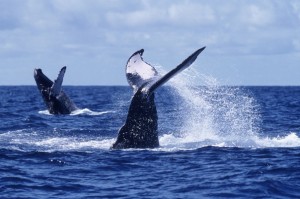 Mexico Population 2013
Mexico Population 2013
The current population of the United Mexican States is estimated to be about 117.41 million people, which is an increase of 4.6% from the last record of the population. The population of the country has been historically greater then the population of Canada, but smaller than the population of Brazil. Based on the total land area and the total population of the country, the population density is estimated to be about 142 people per square mile.
Demographics of Mexico
The largest ethnic group throughout the United Mexican States is the Mestizo group, which is a group of mixed origin, specifically Spanish and Indian. The next largest ethnic group is those who consider themselves part of an indigenous group. The Mexican government recognizes approximately 56 unique indigenous groups. The largest of these is descendent of the Aztecs, the Nahua. This group contains at least 1.7 million people in the Nahua group. The official language of Mexico is considered to be the Spanish language. In fact, the country has the largest Spanish speaking population in the entire world. About 1/3 of the population speaks Spanish as a native speaker. The country is also home to many indigenous languages, as should be evident by the number of indigenous groups in the country.
Religion in Mexico
The largest religious group in the United Mexican States is considered to be the Roman Catholic Church, as it has been throughout all of history. About 77% of the population is considered to be Roman Catholic. The next largest religious group is those that practice some form of Protestantism. About 5% of the population identifies as Protestant. The country also has one of the largest groups of Jehovah’s Witnesses in the entire world.
Sports in Mexico
The most popular sport in the United Mexican States is football (American soccer). However, boxing is also a very popular sport in the country. Other than the United States, the country has produced more world champions than any other country. The national sport of Mexico is considered to be Charreria. This sport involves rodeo, riding, and roping.
Mexican Holidays
Day of the Dead (Spanish: Día de Muertos) is a Mexican holiday celebrated throughout Mexico and around the world in other cultures. The holiday focuses on gatherings of family and friends to pray for and remember friends and family members who have died. It is particularly celebrated in Mexico, where it is a national holiday, and all banks are closed. The celebration takes place on November 1 and 2, in connection with the Catholic holidays of All Saints’ Day and All Souls’ Day. Traditions connected with the holiday include building private altars honoring the deceased using sugar skulls, marigolds, and the favorite foods and beverages of the departed and visiting graves with these as gifts.
Cinco de Mayo (Spanish for “fifth of May”) is a celebration held on May 5. It is celebrated in the United States and regionally in Mexico, primarily in the state of Puebla, where the holiday is called El Día de la Batalla de Puebla (English: The Day of the Battle of Puebla). It originated with Mexican-American communities in the American West as a way to commemorate the cause of freedom and democracy during the first years of the American Civil War, and today the date is observed in the United States as a celebration of Mexican heritage and pride. In the state of Puebla, the date is observed to commemorate the Mexican army’s unlikely victory over French forces at the Battle of Puebla on May 5, 1862, under the leadership of General Ignacio Zaragoza Seguín.
 Animals in Mexico
Animals in Mexico
In the terms of biodiversity, Mexico belongs to five of the most important regions of the world taking the first place in reptile biodiversity with over 740 described species, second in mammals (526), fourth in amphibians (290 and rising) and vascular plants (26,000) and tenth in birds (1,150). Mexico is the destination for two marathon migrations, the monarch butterfly and the gray whale. Every year one billion monarch butterflies travel 2,500 miles to spend the winter in Michoac’n’s pine and oyamel fir forest. The 36-ton gray whales migrate 6,000 miles to Baja peninsula to mate and give birth to their calves. This distance holds the record for the longest known mammal migration.
Mexico City
Historical Population of Mexico
The population of the United Mexican States has historically always increased over the last half of a century. In fact, the population has been growing at a high rate, as the population was about 34.923 million in 1960 and it grew to 112.37 million in 2010.
| Year | Population (millions) |
| 1960 | 34.923 |
| 1965 | 43 |
| 1970 | 48.225 |
| 1975 | 58 |
| 1980 | 66.847 |
| 1985 | 74 |
| 1990 | 81.25 |
| 1995 | 91.158 |
| 2000 | 97.483 |
| 2005 | 103.263 |
| 2010 | 112.337 |
Projected Population of Mexico
The population of the United Mexican States is expected to imitate the trend that it has historically shown over the last half of a century by continuing to increase at a high rate. The birth rates per 1000 people range from 18.6 to about 10.8. However, the death rates only range from about 5.1 deaths per 1000 people to about 9.2 deaths per 1000 people. However, the net migration rate is negative throughout this period. Nonetheless, the population is expected to continue to increase over the next 37 years.
| Year | Population (millions) | Percent Increase |
| 2015 | 119.874 | 2.10% |
| 2020 | 125.663 | 4.80% |
| 2025 | 130.712 | 4.00% |
| 2030 | 134.983 | 3.30% |
| 2035 | 138.275 | 2.40% |
| 2040 | 140.554 | 1.60% |
| 2045 | 141.861 | 0.93% |
| 2050 | 142.253 | 0.27% |


